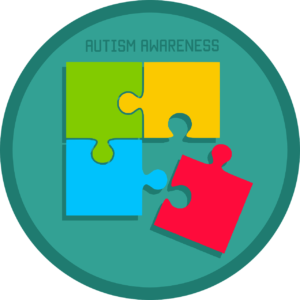Aspergers Syndrome, Autism, and many more similar neurological disorders fall under Autistic Spectrum Disorders (ASD). In children, the disorder propels peculiar behaviors, sensitivity to sensory stimuli, vague understanding of emotions, and lot more. Today, caregivers who are well aware of ASD and its treatment have been able to provide useful education to the kids and create congenial atmosphere for the kids to survive even with their cognitive impairments.
To help them survive in this society, it important to do away with misconceived notions and learn the remedial strategies to deal with the ASD people. Reality is that:
- People with ASD cannot comprehend the social cues and communication skills required to live in a society.
- People without ASD and unaware of the disorder, find Autistic people and Aspies vain or egoist as they don’t respond socially while interacting.
- Therapeutic strategies for one ASD kid would differ immensely from the requirement of the other.
- Environment, kid’s aptitude to cope with the disorder, and type of ASD syndrome that the kid suffers matter in the diagnosis of the disorder.
…Although, one strategy may not work for all, caregivers must be patient, motivated, and pushy in their effort to find a technique that helps ASD kids to get apt education and learn to live happily.
Addressing a Non-ASD Sibling about ASD Training
ASD should be identified and explained to the kids as well. Awareness about the symptoms and training could help their ASD-sibling perform better. Little more attention, caring, and friendship from non-ASD sibling go a long way to help the kids enjoy a happy association.
Addressing Issues on Erratic Behavior
ASD kids don’t understand the repercussions of their actions. Many cannot emotionally connect with the speaker; understand social cues, or complex instructions. As a result, punishing them for not obeying to the dictum of the school or home would not only be futile but also unfair.
However, you can still address erratic behaviors of an ASD child by…
- Changing the situation or the milieu where the kid was in trouble. As ASD kids cannot withstand stress for long, they can subject themselves to risk.
- Preparing ‘behavior diary’ to find out when, why, and what he does during a stressed situation. You can try keeping such situations at bay to avoid “acting out” outbursts.
- Delving on the positive traits of the ASD child. Perhaps he is more focused or intelligent when situations are conducive. A ‘Reward Chart’ can help in finding out and developing the likable traits. This would help the kid to cope with sensitivity and frustrations.
- Instructing the kid in a positive tone and a calm voice. It would help to control the child’s emotions.
OCD and Similar Behaviors
Obsessive Compulsive Disorder (OCD) is quite common among ASD kids where they show repetitive behaviors or obsession about a particular thing or pastime. For instance, you can find some adults finicky about cleanliness and wash their hands over and over again. Kids too, show obsession in reading, or watching a particular movie. If however, the movie show is cancelled, they go into deep depression or start throwing tantrums. Sometimes repetitive behaviors are shown to get rid of a distressing situation.
To find a solution to such obsessive behaviors, you should:
- Time the obsessive behavior and set it into the schedule. For instance, tell the kid that he would read a particular book for a particular interval of time. When the timer goes off, he must stop the activity.
- Keep a ‘Reward Chart’ to identify his good behaviors and reward him instantly for the same. He will gradually learn to keep his obsession under control.
- Allow the kid to socially mix with people or talk in a discussion where they learn to wait and hear what the other person has to say regarding their particular hobby or liking.
Sleeplessness
ASD kids often suffer from sleeplessness or erratic sleeping patterns. For instance, it is quite common to find kids finding it hard to sleep at night. When they do, they don’t sleep for long. They wake up in the middle of the night, walk around in the house. Some kids have nightmares or get distressed while sleeping.
To address this condition, you can:
- Keep the house safe from hazards, which the kid can encounter unknowingly at night.
- Keep a note of why, when, and what the kid does when he wakes up at night. For instance, if it is hot or musty, the room can be made airy or if it is cold at night, he can be provided with warm nightclothes.
- Keep a “therapy dog” to ensure you are notified when your kid wakes up at night by the dog. The dogs can also be trained to ensure that the kid does not meet an accident by wandering about at night.
- Follow night rituals before going to bed or keep wake-up routines similar. Daily routines make things easy for the kids to follow and relieve stress.
- Reading out social stories or narrating him an event can help him to imagine and gradually allow him to sleep.
Attitude in School
Apart from the curriculum, kids need to be told how to entertain themselves during lunch-breaks or in between classes. As they are shy or not able to comprehend social gestures, they often find such breaks troublesome and stressful. To address this problem, caregivers must:
- Put structured or programmed play-time sessions.
- Create buddy system where older children or the class leader initiates group activities or games.
- Providing specific tasks during play time sessions.
Social Mannerisms in Public
Aspergers Syndrome kids are quite sensitive to auditory stimuli. So, the kids are at a loss in places where there is likely to be noisy or busy with movement of the people. Common situations would be going in a public thoroughfare, bus, train, or market. If you have a kid with such problems, you can avoid these spots altogether. However, there are means to tackle such situations, such as:
- Earphones to keep background cacophony at bay.
- Timetables, where specific trip information is visually depicted so that the journey is predictable.
- Tasks during the trip so that the kid is not bored.
Don’t forget to be consistent in your instruction. Involve yourself and family members while executing strategies to the ASD kid. Note that many strategies need to be executed before the final one actually works for the kid.



